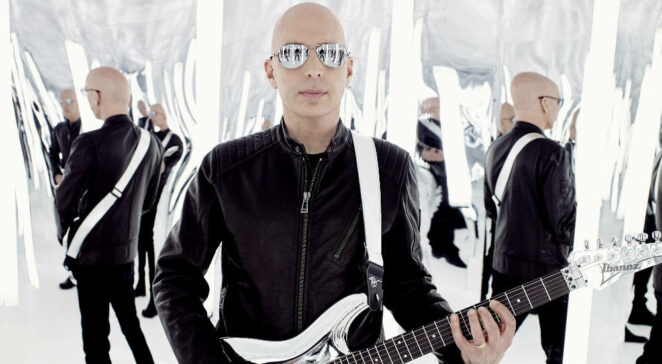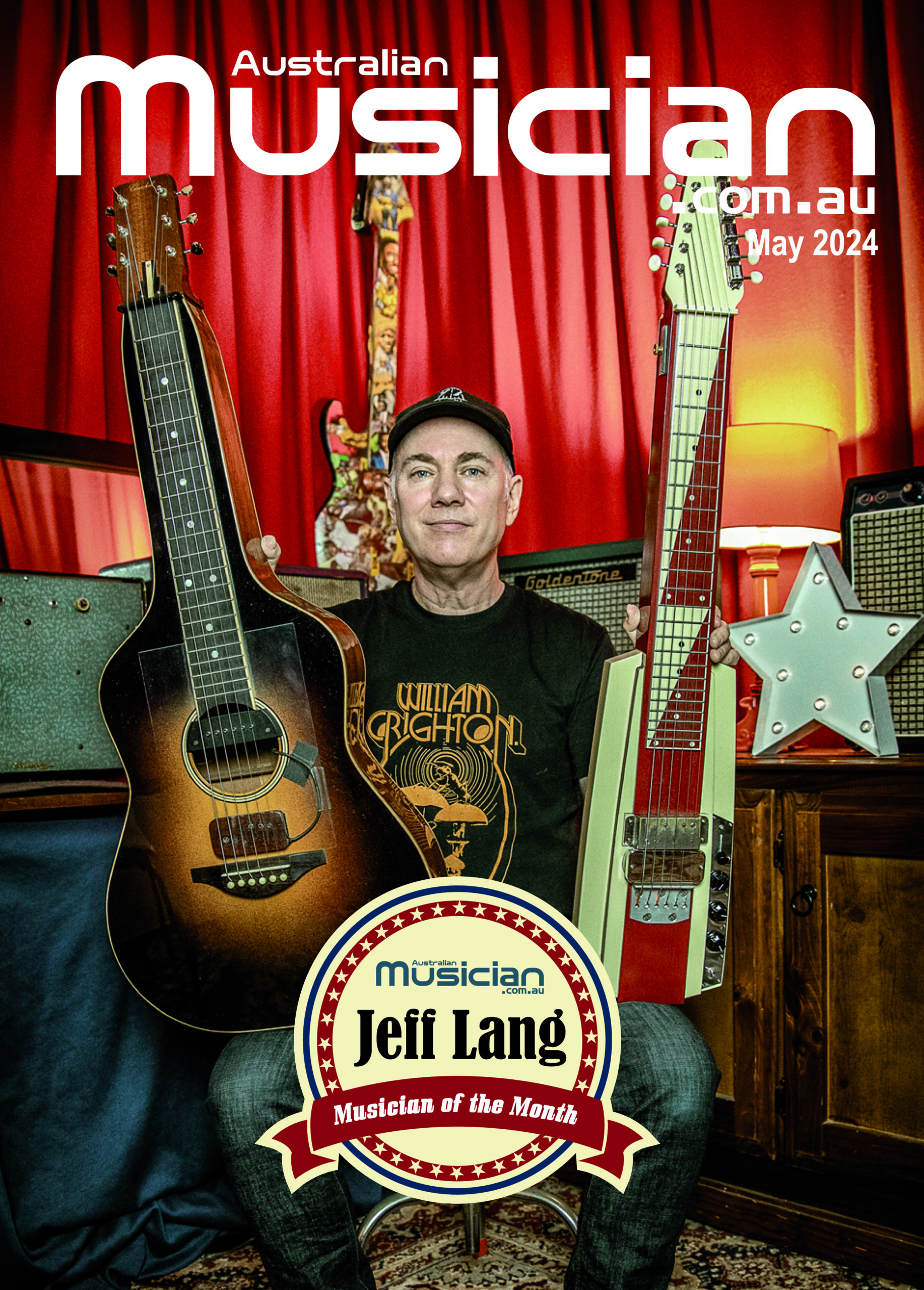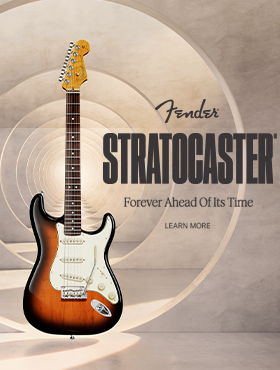
Everyone’s favourite guitar virtuoso, Joe Satriani is about to release his 16th solo album, WHAT HAPPENS NEXT, set to land on January 12, 2018 on Sony/Legacy Recordings. Showcasing a power trio of legendary status, the band includes Satriani on guitar, Rock and Roll Hall of Fame inductee bassist Glenn Hughes (Deep Purple/Black Country Communion) and drummer Chad Smith (Red Hot Chili Peppers), the latter reuniting with Satriani for the first time since their work in the supergroup Chickenfoot. Satriani is also about to embark on an extensive global tour with his G3 project which, as Joe tells us, hopes to hit Australia during the last quarter of 2018. Australian Musician’s Greg Phillips caught up for a chat with Joe about the album, it’s problematic pizzicatos, the probable Australian tour and he fills us in on the new Satriani Ibanez guitar products which will be on display at NAMM in January.
Joe, did you have an overall theme in mind for this album when you started? Was there a criteria for the kind of tune that would be included?
Yeah, I was really excited about this idea that I would celebrate my earliest rock and soul roots. It sounds really simple but actually it was quite an artistic process to shed a lot of elements that I had been picking up over the last few decades. The process was fun and was made more interesting because as I was wrapping up the tour behind the Shock Wave Supernova album and the 30th anniversary of Surfing With An Alien and my son had come out on tour… he was doing a documentary about my whole artistic process. Just having him out there and then following the making of the record was very cathartic because he was really pressing me during interviews to really dig deep and explore that part of me. So I learned so much about myself and about what I was really trying to do with What Happens Next. There was a real innocent desire to kind of reinvent and at the same time, return back to an earlier time.
Did you have the power trio in mind right from the outset?
Yes, I did I really wanted to return to something that was more essential, more gutsy. It just had more natural feel to it. That was very important.
You could have chosen any drummer and bass player you wanted. Why did you choose to go with Glenn Hughes and Chad Smith?
I really wanted to get back to playing some more with Chad. We had done some Chickenfoot shows while we were out on this last tour and it stuck in my mind how much fun that was and how natural and how the communication between Chad and myself was so vital. Early on I thought I have to do something with Chad and as this record began to crystallise in my mind, I thought Chad is definitely the guy and now I just have to find the perfect bass player for him. On top of my list of guys I’d never worked with who I thought were brilliant, was Glenn Hughes. I knew Glenn just a little bit and I reached out to him after I knew Chad was into doing the record and asked him if he would join us. It was his first instrumental record, which was interesting
What kind of brief did you give to the guys before you started work in the studio? What were you looking for from them?
I sent them some demos about a week before. They were all working. Chad was out with the Chili Peppers and Glenn was finishing up the Black Country Communion record so I knew they didn’t have a whole lot of space in their lives for a whole bunch of music from me. I waited until the last minute and gave them the 12 songs and said this is it. We’re just going to do these 12 and we’ll see what happens and that was about it really. Every morning we would pick a song and we’d listen to the demo and then everyone was encouraged to chime in with their ideas on how we should approach the song or if they wanted to make some changes to it that they felt might make it work better. Sometimes songs led us down a very interesting path. Other times we just did what seemed to be the most obvious thing and we just tried to keep the communication between the three of us as vital as possible.
Why did ‘What Happens Next’ become title track?
That was kind of an in-joke with me because I kept asking myself that. A year before doing the record I kept saying … well Joe, what happens next? It was like the little voice in my head and by the time I had written that song, I wasn’t really thinking it would be an album title but it was too obvious after a while and I thought .. well now I have answered the question.. which is THIS is what happens next. So it seemed like the right thing to do, just use those three words but remove the question mark. It was an ambiguous statement to myself and I thought it would make people think twice themselves when they saw the title.
Is it difficult to come up with titles for instrumentals when you don’t have lyrics to draw from?
Not really. People ask me that a lot and I tell them, well if you heard Beethoven’s Moonlight Sonata, we don’t know exactly what he was thinking but you can tell it wasn’t a song about getting a new puppy and being happy. It’s got a lot of sadness in there. You can tell there is heartbreak in that song. In that way, instrumentals don’t really need any set up. The power of the instrumental is that when you and I hear it, we can attach any feeling, any story that we want. That kind of makes it personal for us, makes it our song. From the way I write, from the artist point of view, all my songs are about something very specific, some person or event or some observation. It might be something extremely serious and grave or it might be frivolous and humorous. I don’t really restrict myself when it comes to writing in terms of material. If I need to write a song and I am grieving I will write it and if I need to write a song about a robot cat, then I will write that too and just let it happen.
The track ‘Cherry Blossoms’ is a beautiful song and I think will become a classic for you. What was the inspiration behind that?
I was having a day dream about some kind of romantic feeling and all my experiences being in places around the world where cherry blossoms bloom in the spring and that’s from the east coast of the United States all the way to Japan. There are some beautiful moments and I’m sure there are a lot of other places in the world where that happens but that strikes me from the east coast of United States, where I grew up and then of course the times I have been in Japan and they really love their cherry blossom festival. We have it out here in San Francisco as well and for that brief amount of time in the city that the cherry blossoms are out, it looks really stunning. But as soon as they’re out, those petals are falling and there’s a wistfulness or a sadness also that is in there. So I had a day dream about an age old romance perhaps using the imagery of the falling cherry blossoms to amplify the story.
It has some great pizzicato string parts in there … is that you playing that and if so, what on?
It’s an interesting story in that when I came up with that idea, I didn’t really play it on guitar because it is really awkward on guitar. The really high one, there is almost no room for my knuckles to fit all the way up there. So I wrote it and I thought, this would be better on piano. So I recorded it on piano and then tried it with an organ and then decided that it maybe should be a harp. Then eventually when I brought it to the studio, it had a combination of my guitar playing and all of those instruments that I mentioned. I told the guys, I don’t know what is going to be playing this but we are going to have our choice. By the end of the day we are going to have all of these instruments and we can use them all or just use one. It was really quite funny because everybody had a different opinion. Eric Caudieux, who did a lot of the orchestrating and editing, right away he said, you gotta get rid of those pizzicatos. My producer engineer was like, no, no I love those pizzicatos. It was a good fight all the way to the end and eventually it became a 50/50 mix of my very clean guitar and the pizzicato strings in the background.
What will happen when you play that song live?
Mike Keneally is in the band and he has a beautiful pizzicato sound on his keyboard. The funny thing is that my melody ends right where the pizzicato starts. Last week we had a whole week of rehearsal and we tried all these different ways of when I stop the melody and when I start the arpeggio. We came to the conclusion that I should play the last note of the melody, then pick up the arpeggios where I left off, so I wind up missing the first arpeggio and then I play the rest of them. Who knows what will happen. By the time I get to Australia, there’s no guarantee who will be playing that.
In ‘Forever and Ever’ there’s quite a nod and wink to Hendrix in the intro. Was that intentional or just an influence coming through?
Well both but there’s also a funny story about which involves the pizzicato controversy! The song was originally written with a Van Halen kind of guitar feel then I realised it was too aggressive, so I played it on keyboards and then I didn’t like the way it sounded on keyboards and I eventually wound up with pizzicato. Right before I finished doing the demo I thought, I wonder if I shouldn’t use again a pizzicato string part and I thought well, what would be the complete opposite of that? On one take just improvising, I did his Hendrix version of the chords and I left them on just for the demo. When I brought it to the studio and everybody heard it, once again everybody had a different opinion about what they would like for the introduction and the outro. By the end of the sessions, everybody had pretty much decided to get rid of the strings and just leave the Hendrix part and I was kinda happy with that. I like that fact that what ends up on the final take is something that shows the evolution of the creative process. Even though it was written on guitar and then went to pizzicato, eventually I didn’t use any of it and I just used the Hendrix part. You never know with these records, it’s always a creative journey.
Did you use many different guitars on album?
Not too many. Actually we brought too many, that’s for sure! My tech was definitely not too happy about that. I used 3 or 4 signature JS guitars… the orange MCO, the purple MCP … two of those and one of the ART guitars from 2014. Those were illustrated by myself a few years ago, with the black finish. They wound up being the guitars I played the melodies on and the solos. When we needed some different flavour, I had a Les Paul and a Flying V, a Strat … even an Ibanez Tele that we threw in there to balance out the stereo field and give it a slight texture. Then with the amps, we had maybe fifteen vintage Marshalls and an equal amount of vintage Fender amps then we had my signature Marshall head, which did most of the work, so wasn’t a whole lot of equipment.
How long before a recording session do you like to change your strings?
I leave that up to my tech Mike Manning. He’s usually the one who will walk into the room and say hey, it sounds pretty shitty … better change your strings! I am terrible about that because once I’m in a creative state of mind, I am not really thinking about the quality of the speaker or if I should change the battery in my wah wah pedal or something like that. That’s why you have to have a really good tech and engineer who will let you be creative and they’ll take care of all the technical work. I would think that he would change strings for every new song but he would be careful not to change strings if he thought we were going to continue to work on something because you may come back in the next day and decide to change four bars and you want the guitar to sound exactly the same.
There’s another NAMM Show coming up in Anaheim in January. Can we expect any new Joe Satriani products to be there?
Absolutely. Ibanez has already come out and let everyone know that the MCR, Muscle Car Red JS guitar is available. The model number is 2480 and it now comes stock with a sustainiac pickup in the neck position, which is the configuration I have been using for touring for around 4 years now. Then of course the chrome guitar which is pictured on the What Happens Next CD and LP cover, will be released at the NAMM Show. They’re going into production for the first time since 1990, so you’ll be able to get a JS chrome guitar. They really are stunning, beautiful looking and they finally solved all of the details that come with trying to make chrome a guitar. They figured it out .. only took 30 years!
You have the tour coming up billed as the What Happens Next/G3 tour. How will that work with the new material?
We were rehearsing last week and about half of the set is new material and the other half is what we call greatest hits and some that we have perhaps neglected over the years. The way it chiefly works is that each of the three guys (John Petrucci and Phil Collen for the USA run. Petrucci and Uli Jon Roth for Europe) do their thing and bring their musical message to the fans for an equal amount of time on stage. Then at the end of my set, the other two come out on stage and join me in my band we have a crazy jam. We usually pick songs which are tried and true rock songs that we can all celebrate the electric guitar with. It’s a lot of fun for everybody because they not only get to do what they want, promoting their new album or playing their hits but they also get to forget about all that stuff and get to play and learn and try to outfox each other on stage.
You mentioned Australia earlier. Will you be down this way any time soon?
I hope so. I have seen it penciled in for the southern hemisphere for the last half of the year, so somewhere around October through December we would hope to be in Australia.
What Happens Next is out January 12, 2018. Pre order here.



